|
|
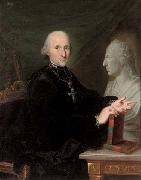 |
Karl Kaspar Pitz
|
|
painted Portrait of a cleric a book in his right hand, by a marble bust in before 1795 |
|
|
|
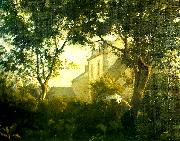 |
karl madsen
|
|
(1855-1938), Danish art historian, director of Statens Museum for Kunst |
|
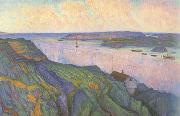 |
Karl Nordstrom
|
|
Swedish Painter, 1855-1923
was a Swedish painter and one of the leading members of Konstnärsförbundet, which he chaired from 1896 until its dissolution in 1920. Born on Gotland, but growing up on Tjörn on the Swedish West Coast, Nordström studied at principskolan, the preparatory school of the Royal Academy of Arts in Stockholm and the private painting school of Edvard Perseus, but was never promoted to the "Antique school" of the Academy but had to continue on his own. Traveling to Paris in 1881, he was influenced by the impressionists. He spent a couple of years in Grez-sur-Loing, the site of an important colony of Scandinavian artists, practising his plein air painting in the strong French sunlight. In 1885, he joined the group of young artists protesting against the policies and leadership of the Academy, and he was ever since 1886 one of the leading members of Konstnärsförbundet, the formalization of the opposition group. He was its chairman from 1896 until its dissolution in 1920. In 1886, he married xylographer and photographer Tekla Lindeström in Paris. Later the same year, he settled on Tjörn, using what he had learnt in France about light and colours to depict the landscape where he had grown up. He spent the summer of 1889 in Visby. Around 1890, he moved from his earlier impressionism towards a more synthetist style. His influences came from Japanese art, which he had encountered in Paris, and from Gauguin, whose paintings he first saw in photographs he had received from Ivan Agueli. One of Nordström's old friends from the time at the Academy and in Perseus' school, Nils Kreuger, had lived in the city of Varberg since 1888. He convinced Nordström to move there in 1892, and they were joined by another of their old friends, Richard Bergh, in 1893. |
|
|
|
|
|
 |
Karl Theodor von Piloty
|
|
German, 1826-1886,German painter. He received his first training from his father, the lithographer Ferdinand Piloty (1786-1844). In 1838 Piloty entered the Munich Akademie der Bildenden Kenste and from 1840 became a pupil of Julius Schnorr von Carolsfeld. Piloty had to manage the family business after his father's death in 1844, but in 1846 he returned to the Akademie as a pupil of Karl Schorn (1801-50). His artistic development was influenced by the work of the Antwerp artist Louis Gallait (1810-87), the heightened colour and multi-figure compositions in whose history paintings especially impressed him. Besides his study of Old Masters, especially Veronese and Rubens, he was influenced by French history painters like Paul Delaroche and Horace Vernet. His history painting Seni by the Body of Wallenstein (1855; Munich, Neue Pin.) was an enormous success, allowing him to take a leading role in the art life of Munich. In 1860 he was ennobled. |
|
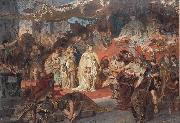 |
Karl von Piloty
|
|
Karl Theodor von Piloty (1 October 1826 - 21 July 1886) was a German painter.
Von Piloty was born in Munich. His father, Ferdinand Piloty (d. 1844), enjoyed a great reputation as a lithographer. In 1840, Karl was admitted as a student of the Munich Academy, under the artists Karl Schorn and Julius Schnorr von Karolsfeld. After a journey to Belgium, France and England, he commenced work as a painter of genre pictures, and in 1853 produced a work, Die Amme (The Wet Nurse), which, on account of its originality of style, caused a considerable sensation in Germany at the time.
But he soon forsook this branch of painting in favour of historical subjects, and produced in 1854 for King Maximilian II The Accession of Maximilian I to the Catholic League in 1609. It was succeeded by Seni at the Dead Body of Wallenstein (1855), which gained for the young painter the membership of the Munich Academy, where he succeeded Schorn (his brother-in-law) as professor.
Among other well-known works by Piloty are the Battle of the White Mountain near Prague, Nero Dancing upon the Ruins of Rome (1861), Godfrey of Bouillon on a Pilgrimage to the Holy Land (1861), Galileo in Prison (1864) and The Death of Alexander the Great (unfinished), his last great work. He also executed a number of mural paintings for the royal palace in Munich.
For Baron von Schach, he painted the famous Discovery of America. In 1874, he was appointed keeper of the Munich Academy, being afterwards ennobled by the king of Bavaria. Piloty was the foremost representative of the realistic school in Germany. He was a successful teacher, and among his more famous pupils were Hans Makart, Franz von Lenbach, Franz Defregger, Gabriel von Max, Georgios Jakobides and Eduard von Gretzner. |
|
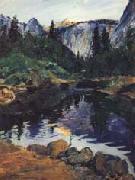 |
karl yens
|
|
1868-1945
was a United States painter who specialised in coastal views. Born in Germany, he emigrated to the U.S. and settled in Laguna Beach, California. He was a founding member of the California Water Color Society. |
|
|
|
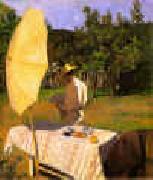 |
Karoly Ferenczy
|
|
1863-1917
Karoly Ferenczy Locations
was a Hungarian Impressionist painter. He was one of the leading artists of the Nagybanya school of painting. He studied law and economics. He began to deal with painting at the Academie Julian in Paris. In 1889, he moved back to Hungary, to the town of Szentendre. Between 1893 and 1896 he lived in Munich with his family: There he joined the circle of Simon Hollosy: with whom he moved to Nagybanya in 1896 and became the leading painter of the artist colony. After 1906 he moved to Budapest and became the professor of the College of Fine Arts. His wife Olga Fialka and their children, the painter Valer Ferenczy (1885-1954), the tapestry weaver Noemi Ferenczy (1890-1957) and the sculptor Beni Ferenczy (1890- 1967) were famous representatives of Hungarian art. |
|
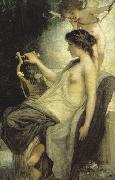 |
Karoly Lotz
|
|
(16 December 1833 - 13 October 1904) was a German-Hungarian painter.
Karl Lotz was born in Bad Homburg vor der Höhe, Germany, the 7th and youngest surviving child of Wilhelm Christian Lotz and Antonia Höfflick (Höfflich). His father was a valet of Prince Gustav zu Hessen-Homburg at the time when the prince was representing Austria at the Congress of Vienna, which among other matters dealt with the House of Hessen-Homburg's rights of sovereignty over Hessen-Darmstadt. The sudden death of the young Baron von Sinclair, charge d'affaires, forced W. C. Lotz temporarily into the rôle. While in Hungary in 1815 he made the acquaintance of the 13-year-old Antonie Hoefflich, whom he married three years later. She gave birth to 8 children, of whom Karl was the youngest.
W. C. Lotz died in 1837 and Antonie moved the family to Pest (now one of the three constituent parts of Budapest; the one on the east bank of the River Danube). Karl attended the Piaristengymnasium, where, although Calvinist, he was awarded a scholarship for his exceptional academic performance. He began his artistic career as a pupil of the Hofkapellmeister Destouches, then in the academy of the Venetian master Jacopo Marastoni (1804-1860). Later he was a pupil of the historical painters Henrik Weber (1818-1866) in Budapest and Carl Rahl (1812-1865) in Vienna.
Together with Rahl he worked on numerous commissions. Later he started on his own original works, first as a romantic landscape artist in scenes of the Alföld (the Hungarian lowland plain), and then as a creator of monumental murals and frescos in the style of the Venetian master Tiepolo.
After various works in Budapest he became active in Vienna. He laid out plans for a grandiose palace, and completed murals commissioned by the Abbot of Tihany for his abbey church on the shore of Lake Balaton. He became known for his portraits and nudes, for which both his wife and his daughters (Katarina in particular) posed. Lotz found married bliss only at the age of 58, when he married the widow Jacoboy, the former wife of his brother Paul Johann Heinrich, who had died in 1828. From then on he signed his works Keroly Jacoboy-Lotz.
In 1882 Lotz was appointed Professor at various art academies in Budapest, and in 1885 he became dean of a newly-established department for women painters. He was an honorary member of the Academy of Pictorial Arts in Vienna.
Tomb of Keroly Lotz by Jenos Pesztor (Kerepesi cemetery in Budapest)Hist last important public commission was the "Apotheosis of the Habsburg Dynasty", a huge ceiling fresco in the Habsburg Room of the newly rebuilt Royal Palace, that he painted in 1903, one year before his death. Lotz was already seriously ill when he worked on the fresco. The "Apotheosis" followed the traditions of Baroque court painting and the work was praised by contemporary critics. The fresco survived the war unscathed, but it was destroyed in the 1950s.
He died in 1904 in Budapest. As a "Prince of Hungarian Artists" he was given a state funeral and interred inside a memorial. His pictures, drawings and sketches were donated to the State of Hungary and are now in the Szepműveszeti Mezeum. Several Hungarian cities have streets named after him, there are Hungarian stamps bearing his likeness, and there is a bust in the National Museum in Budapest.
|
|
|
|
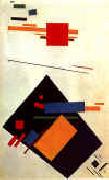 |
Kasimir Malevich
|
|
1878-1935
Kasimir Malevich Gallery
In 1904, after the death of his father, he moved to Moscow. He studied at the Moscow School of Painting, Sculpture and Architecture from 1904 to 1910 and in the studio of Fedor Rerberg in Moscow (1904?C1910). In 1911 he participated in the second exhibition of the group Soyuz Molodyozhi (Union of Youth) in St. Petersburg, together with Vladimir Tatlin and, in 1912, the group held its third exhibition, which included works by Aleksandra Ekster, Tatlin and others. In the same year he participated in an exhibition by the collective Donkey's Tail in Moscow. By that time his works were influenced by Natalia Goncharova and Mikhail Larionov, Russian avant-garde painters who were particularly interested in Russian folk art called lubok. In March 1913 a major exhibition of Aristarkh Lentulov's paintings opened in Moscow. The effect of this exhibition was comparable with that of Paul Cezanne in Paris in 1907, as all the main Russian avant-garde artists of the time (including Malevich) immediately absorbed the cubist principles and began using them in their works. Already in the same year the Cubo-Futurist opera Victory Over the Sun with Malevich's stage-set became a great success. In 1914 Malevich exhibited his works in the Salon des Independants in Paris together with Alexander Archipenko, Sonia Delaunay, Aleksandra Ekster and Vadim Meller, among others.
It remains one of the great mysteries of 20th century art, how, while leading a comfortable career, during which he just followed all the latest trends in art, in 1915 Malevich suddenly came up with the idea of Suprematism. The fact that Malevich throughout all his life was signing and re-signing his works using earlier dates makes this u-turn in his artistic career even more ambiguous. Be that as it may, in 1915 he published his manifesto From Cubism to Suprematism. In 1915-1916 he worked with other Suprematist artists in a peasant/artisan co-operative in Skoptsi and Verbovka village. In 1916-1917 he participated in exhibitions of the Jack of Diamonds group in Moscow together with Nathan Altman, David Burliuk and A. Ekster, among others. Famous examples of his Suprematist works include Black Square (1915) and White on White (1918).
In 1918 Malevich decorated a play Mystery Bouffe by Vladimir Mayakovskiy produced by Vsevolod Meyerhold.
Malevich also acknowledged that his fascination with aerial photography and aviation led him to abstractions inspired by or derived from aerial landscapes. Harvard doctoral candidate Julia Bekman Chadaga writes: ??In his later writings, Malevich defined the 'additional element' as the quality of any new visual environment bringing about a change in perception .... In a series of diagrams illustrating the ??environments' that influence various painterly styles, the Suprematist is associated with a series of aerial views rendering the familiar landscape into an abstraction..." (excerpted from Ms. Bekman Chadaga's paper delivered at Columbia University's 2000 symposium, "Art, Technology, and Modernity in Russia and Eastern Europe"). |
|
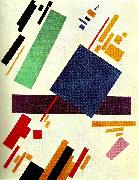 |
kasimir malevitj
|
|
Kazimir Severinovich Malevich (Russian: Polish: Kazimierz Malewicz, Ukrainian, German: Kasimir Malewitsch, Belarusian: (February 23, 1879, previously 1878: see below--May 15, 1935) was a Russian painter and art theoretician, born in Ukraine of ethnic Polish parents. He was a pioneer of geometric abstract art and the originator of the Avant-garde Suprematist movement. |
|
|
|
|
|
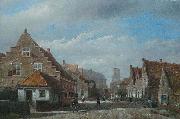 |
Kasparus Karsen
|
|
(April 2, 1810, Amsterdam - July 24, 1896, Biebrich near Wiesbaden, Germany) was a Dutch painter who specialised in townscapes.
He taught Cornelis Springer 1835-1837.
|
|
|
|
|
|
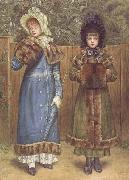 |
Kate Greenaway,RWS,RI
|
|
1846-1901
English painter, illustrator and writer. The daughter of a Fleet Street wood-engraver, John Greenaway (1818-90), she trained at Islington School of Art, Heatherleys Academy and the Slade School of Fine Art, all in London. In 1868 she did her first commercial work, producing Christmas and Valentine cards for Marcus Ward, Belfast. |
|
 |
kathe kollwitz
|
|
German Expressionist Printmaker and Sculptor, 1867-1945,was a German painter, printmaker, and sculptor whose work offered an eloquent and often searing account of the human condition in the first half of the 20th century. Her empathy for the less fortunate, expressed most famously through the graphic means of drawing, etching, lithography, and woodcut, embraced the victims of poverty, hunger, and war. Initially her work was grounded in Naturalism, and later took on Expressionistic qualities. |
|
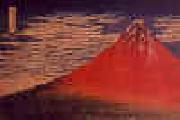 |
Katsushika Hokusai
|
|
Japanese
1760-1849
Katsushika Hokusai Gallery
was a Japanese artist, ukiyo-e painter and printmaker of the Edo period. In his time, he was Japan's leading expert on Chinese painting.[2] Born in Edo (now Tokyo), Hokusai is best-known as author of the woodblock print series Thirty-six Views of Mount Fuji which includes the iconic and internationally recognized print, The Great Wave off Kanagawa, created during the 1820s. Hokusai created the "Thirty-Six Views" both as a response to a domestic travel boom and as part of a personal obsession with Mount Fuji.[3] It was this series, specifically The Great Wave print and Fuji in Clear Weather, that secured Hokusai??s fame both within Japan and overseas. As historian Richard Lane concludes, ??Indeed, if there is one work that made Hokusai's name, both in Japan and abroad, it must be this monumental print-series...?? While Hokusai's work prior to this series is certainly important, it was not until this series that he gained broad recognition and left a lasting impact on the art world. It was The Great Wave print that initially received, and continues to receive, acclaim and popularity in the Western world. |
|
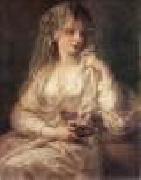 |
KAUFFMANN, Angelica
|
|
Swiss Neoclassical Painter, 1741-1807
Swiss-born Italian painter. She began studying art in Italy as a child, showing great precocity, and in 1766 her friend Joshua Reynolds took her to London. There she became known for her decorative work with architects such as Robert Adam. Her pastoral compositions incorporate delicate and graceful depictions of gods and goddesses; though her paintings are Rococo in tone and approach, her figures are Neoclassical (see Classicism and Neoclassicism). Her portraits of female sitters are among her finest works. |
|
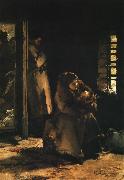 |
Kazimierz Alchimowicz
|
|
(1840 ?C 1916) was a Lithuanian-born Polish romantic painter.
Born in Dziembrow, Lithuania, Alchimowicz was banished to Siberia for six years for his participation in the January Uprising. After his return, he enrolled in a drawing class in Warsaw taught by Wojciech Gerson. The class had a great influence on his later artistic works. He later studied art in Munich, Germany and Paris, France. While staying in France, Alchimowicz was a craftsmen decorating porcelain and earthenware crafts. He settled permanently in Warsaw in 1880 to paint professionally. His artistic inspiration mainly came from patriotic topics and history. |
|
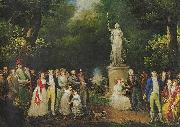 |
Kazimierz Wojniakowski
|
|
(1771-1812) was a Polish painter.
Wojniakowski was a pupil of Marcello Bacciarelli.
His work as a portraitist was influenced by that of the Polish painter Jezef Grassi, as in Wojniakowski's 1796 Portrait of Izabela Czartoryska, nee Fleming.
Other note-worthy portraits by Wojniakowski include his portrait of Tadeusz Kościuszko.
Wojniakowski also produced religious works and scenes of contemporary historic events (e.g., The Constitution of May 3, 1791, 1806).
Notable as well are Wojniakowski's drawings from journeys, e.g. in Lublin Province.
|
|
 |
Kazimir Malevich
|
|
1878-1935
Russian painter, printmaker, decorative artist and writer of Ukranian birth. One of the pioneers of abstract art, Malevich was a central figure in a succession of avant-garde movements during the period of the Russian revolutions of 1905 and 1917 and immediately after. The style of severe geometric abstraction with which he is most closely associated, SUPREMATISM, was a leading force in the development of CONSTRUCTIVISM, the repercussions of which continued to be felt throughout the 20th century. His work was suppressed in Soviet Russia in the 1930s and remained little known during the following two decades. The reassessment of his reputation in the West from the mid-1950s was matched by the renewed influence of his work on the paintings of Ad Reinhardt and on developments |
|
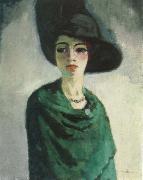 |
kees van dongen
|
|
kees van dongen,(1877 to 1968),French painter and printmaker of Dutch birth. He took evening classes in geometric drawing from 1892 to 1897 at the Akademie voor Beeldende Kunsten in Rotterdam. In 1895 he began working intermittently for the newspaper Rotterdamsche Nieuwsblad, for which he made, among other things, a series of bright watercolour drawings of Rotterdams red-light district and illustrations of Queen Wilhelminas coronation. Van Dongen first paintings used dark tones in imitation of Rembrandt, who remained the most important model for his work; his later book on Rembrandt was, in fact, a projection of his own life. By the mid-1890s he was using more vivid contrasts of black and white, for example in Spotted Chimera (1895; priv. col., see Chaumeil, pl. 1), his palette soon becoming brighter and his line more animated. In Le Muet Windmill (1896; priv. col., see Chaumeil, pl. 7), a red ochre monochrome painting, he successfully enlivened the colour by means of broad, energetic brushstrokes. |
|
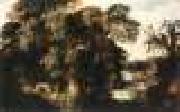 |
KEIRINCKX, Alexander
|
|
Flemish painter (b. 1600, Antwerpen, d. 1652, Amsterdam).
Flemish painter. He was the son of Matthijs Keirinckx and Anna Masson. In 1619 he became a master in Antwerp's Guild of St Luke, he married Clara Matthausen on 18 June 1622, and in 1624 he took on Artus Verhoeven as an apprentice. From 1636 onwards he is regularly recorded in Amsterdam, where he was registered as a citizen in the year of his death. He visited Great Britain, possibly in 1625 (Walpole mentions two signed and dated drawings of London views from this year) and definitely in 1640-41, when he undertook commissions from King Charles I to paint views of royal castles and palaces. |
|
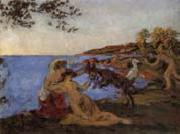 |
Ker xavier roussel
|
|
French Nabi Painter, 1867-1944
was a French painter associated with Les Nabis. Born François Xavier Roussel in Lorry-les-Metz, Moselle, at age fifteen he studied at the Lycee Condorcet in Paris; alongside his friend Édouard Vuillard, he also studied at the studio of painter Diogene Maillart. In 1888 he enrolled in the École des Beaux-Arts, and soon began frequenting the Academie Julian where Maurice Denis and other students formed the group Les Nabis. He is best known for paintings of French landscapes usually depicting women, children, nymphs and fauns in bucolic settings. In 1899, Roussel, Vuillard, and another close friend, Pierre Bonnard, traveled to Lake Como, Venice and Milan. In 1926 Ker-Xavier Roussel won the Carnegie Prize for art. Ker-Xavier Roussel died in 1944 at his home in L'Étang-la-Ville, Yvelines. Roussel is mentioned in Gertrude Stein's Autobiography of Alice B. Toklas, chapter 3. There she recounts an exchange he had with Theodore Duret in Vollard's shop at an uncertain date after 1904. |
|
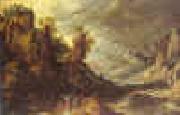 |
Kerstiaen de Keuninck
|
|
1560-1635
Flemish
Kerstiaen de Keuninck Gallery
Flemish painter. Although from Courtrai, from an early age he lived in Antwerp. He was listed in 1577 as one of the recipients of the Poor-box (armenbus) of the Antwerp Guild of St Luke, where he was received as master in 1580. He married in 1585. De Keuninck took on Carel de Ferrara as an apprentice in 1599. His son Kerstiaen de Keuninck the younger (d 1642-3) became a master in 1613. In 1629 Engel Ergo started an apprenticeship with a Kerstiaen de Keuninck: it is not clear whether this refers to father or son. |
|
|
|
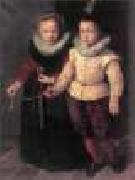 |
KETEL, Cornelis
|
|
Dutch painter (b. 1548, Gouda, d. 1616, Amsterdam).
Dutch painter, draughtsman and sculptor, active also in France and England. He was one of the most important portrait and narrative painters of the Dutch Mannerist school of the late 16th century and the early 17th. He received his earliest training in Gouda from his uncle Cornelis Jacobsz. Ketel (d c. 1568) and studied for a year with the painter Anthonie Blocklandt in Delft c. 1565. Ketel then travelled to France and lived in Paris and Fontainebleau. |
|
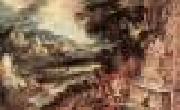 |
KEUNINCK, Kerstiaen
|
|
Flemish painter (b. 1560, Kortrijk, d. 1632/3, Antwerpen)
Flemish painter. Although from Courtrai, from an early age he lived in Antwerp. He was listed in 1577 as one of the recipients of the Poor-box (armenbus) of the Antwerp Guild of St Luke, where he was received as master in 1580. He married in 1585. De Keuninck took on Carel de Ferrara as an apprentice in 1599. His son Kerstiaen de Keuninck the younger (d 1642-3) became a master in 1613. |
|
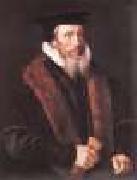 |
KEY, Adriaan
|
|
Flemish painter (b. ca. 1544, Antwerpen, d. after 1589, Antwerpen). |
|
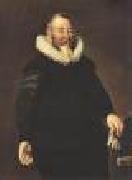 |
KEYSER, Thomas de
|
|
Dutch Baroque Era Painter, ca.1596-1667
son of Hendrick de Keyser I. Following an apprenticeship with an unidentified master in painting, he trained from 1616 to 1618 with his father in architecture. Although he ultimately followed his father and two brothers, Pieter and Willem, into service for the city of Amsterdam as city mason (1662-7), no designs for buildings by Thomas are known, with the exception of an unbuilt triumphal arch published in Salomon de Bray's Architectura moderna |
|
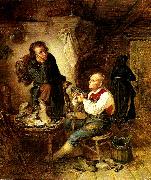 |
kilian zoll
|
|
Kilian Christoffer Zoll (29 september 1818 - 9 november 1860) was a Swedish artist. He belonged to the Dusseldorf school of painting and painted genre pictures, landscape, portraits, children and altarpieces.
Zoll studied at the Royal Swedish Academy of Arts in Stockholm 1835-1839. Within the Academy, Zoll and his fellow students mostly treated mythical and historical subjects, but as soon as he became independent he devoted himself to genre painting.
He travelled and made sketches through Sweden; Skåne, Halland, Småland and Dalarna. He participated in the academy exhibitions 1850, 1853, 1856 and 1858 with a total of 19 oil paintings. His paintings from this period address topics such as Children playing with a cat, Grandma's joy, Old Woman at the Spinning Wheel.
In 1854 he traveled to Dusseldorf in the company of a fellow artist Bengt Nordenberg. In Dusseldorf he studied art together with another Swedish artist Marcus Larson - together they executed several paintings. He returned to Sweden in 1855. He and Nordenberg tried to get a travel grant from the Swedish Academy of Arts, but he could not get it because he was older than the rules allowed.
The following year he went back to Dusseldorf, now married, and returned to Sweden 1858. Once again, he traveled through the province of Halland in artistic studies and had planned to return to Dusseldorf. He, however, fell ill and died before then. |
|
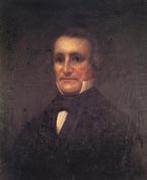 |
king Charles Bird
|
|
American portrait Painter, 1785-1862
American painter. He was encouraged to paint by his grandfather, Nathaniel Bird (d 1796), an amateur painter, and took lessons with Samuel King, a portrait painter. In 1800-05 he was apprenticed in New York to Edward Savage, whose curious studio-museum and period of study abroad with Benjamin West impressed him deeply. |
|
|
|
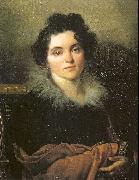 |
Kiprensky, Orest
|
|
Russian Painter, 1782-1836
Russian painter and draughtsman. The leading Russian portrait painter of the Romantic period, he was the illegitimate son of the landowner A. D'yakonov and was adopted by his serf, Adam Shval'b and granted his freedom at birth. His surname is unconnected with that of either his real or his adoptive father, and its origin is uncertain. In 1798 he was sent to the St Petersburg Academy of Arts, eventually studying history painting under Gabriel-Francois Doyen and Grigory Ugryumov. In 1805 he received an important gold medal for his painting Dmitry Donskoy on the Field of Kulikovo (St Petersburg, Rus. Mus.) and won the right to travel to Italy on a scholarship. He did not, however, do so immediately, because of the tense political situation in Europe. Kiprensky's history painting was in keeping with the patriotic mood of Russian society during the years of the war against Napoleon. |
|
|
|
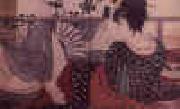 |
Kitagawa Utamaro
|
|
Japanese
1753-1806
Kitagawa Utamaro Gallery
Biographical details for Utamaro are extremely limited, and each reference gives a substantially different account.
Various accounts claim that he was born in either Edo (present-day Tokyo), Kyoto, or Osaka (the three main cities of Japan), or a provincial town (no one is sure exactly which one) in around 1753; the exact date is also uncertain. Another long-standing tradition has is that he was born in Yoshiwara, the courtesan district of Edo, the son of a tea-house owner, but there is no evidence of this. His original name was Kitagawa Ichitaro.
It is generally agreed that he became a pupil of the painter Toriyama Sekien while he was still a child, and there are many authorities who believe that Utamaro was his son as well. He lived in Sekien's house while he was growing up, and the relationship continued until Sekien's death in 1788.
Sekien was originally trained in the aristocratic Kan?? school of painting, but in middle age he started to lean toward the popular (or ukiyo-e) school. Sekien is known to have had a number of other pupils, none of any distinction.
Utamaro, in common with other Japanese of the time, changed his name as he became mature, and also took the name Ichitaro Yusuke as he became older. He apparently also married, although little is known about his wife, and he apparently had no children.
His first major professional artistic work, at about the age of 22, in 1775, seems to have been the cover for a Kabuki playbook, under the g?? of Toyoaki. He then produced a number of actor and warrior prints, along with theatre programmes, and other such material. From the spring of 1781, he switched his g?? to Utamaro, and started painting and designing fairly forgettable woodblock prints of women.
At some point in the middle 1780s, probably 1783, he went to live with the young rising publisher Tsutaya J??zabur??, with whom he apparently lived for about 5 years. He seems to have become a principal artist for the Tsutaya firm. His output of prints for the next few years was sporadic, as he produced mostly illustrations for books of kyoka, literally 'crazy verse', a parody of the classical waka form. He seems to have produced nothing at all that has survived in the period 1790-1792.
In about 1791 Utamaro gave up designing prints for books and concentrated on making half-length single portraits of women, rather than the prints of women in groups favoured by other ukiyo-e artists. In 1793 he achieved recognition as an artist, and his semi-exclusive arrangement with the publisher Tsutaya J??zabur?? was terminated. He then went on to produce a number of very famous series, all featuring women of the Yoshiwara district.
Over the years, he also occupied himself with a number of volumes of nature studies and shunga, or erotica. In 1797, Tsutaya J??zabur?? died, and Utamaro apparently was very upset by the loss of his long-time friend and supporter. Some commentators feel that his work after this never reached the heights it did before.
In 1804, at the height of his success, he ran into legal trouble by publishing prints related to a banned historical novel. The prints, entitled Hideyoshi and his 5 Concubines, depicted the military ruler Toyotomi Hideyoshi's wife and concubines; Consequently, he was accused of insulting Hideyoshi's dignity. He was sentenced to be handcuffed for 50 days (some accounts say he was briefly imprisoned). According to some sources, the experience crushed him emotionally and ended his career as an artist.
He died two years later, on the 20th day of the 9th month, 1806, aged about fifty-three, in Edo.
|
|
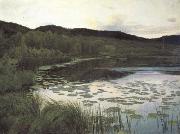 |
Kitty Kielland
|
|
Norwegian Painter, 1843-1914
was a Norwegian landscape painter. Kielland was born to an affluent family in Stavanger, the older sister of Alexander Kielland. Kielland's mutual interactions with her brother would be important to shaping her as an artist. Although she received some training in drawing and painting, it was not until she turned thirty that she was allowed to train as a professional artist. In 1873 she traveled to Karlsruhe where she was trained by Hans Gude. As a woman Kielland was forced to take private lessons from Gude instead of joining his landscape painting class. Gude's adherence to realism left a lasting impression on Kielland that was visible in her later works.[ |
|
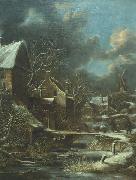 |
Klaes Molenaer
|
|
(1630, Haarlem - 1676, Haarlem), was a Dutch Golden Age painter.
According to the RKD he was the brother of the painters Bartholomeus and Jan Miense Molenaer. He became a member of the Haarlem Guild of St. Luke in 1651 and paid dues yearly until 1676.He was a landscape painter influenced by Jacob van Ruisdael.
|
|
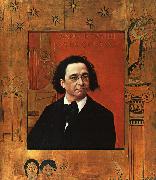 |
Klimt, Gustav
|
|
Austrian Art Nouveau Painter, 1862-1918
Artist Gustav Klimt, like composer Gustav Mahler, philosopher Ludwig Wittgenstein and big-time thinker Sigmund Freud, was a hotshot of Vienna's glory days as it ushered in the 20th century. Influenced by Impressionism, Symbolism and Art Nouveau, Klimt founded the Vienna Secession (1898), an avant-garde art movement that included a broad base of artisans and craftsmen as well as painters. Klimt himself was known more for elaborate graphic schemes than "painterly" work -- his most famous piece, The Kiss (1908), shows his distinctive gold-encrusted decorations over a semi-realistic portrait of an embracing couple. He used the framework of myth and allegory and he painted women, in ornate portraits and erotic exposures that were scandalous by Victorian-era standards. He also had time for more than painting -- after his death he was credited with as many as 14 illegitimate children. A big influence on the decorative arts in Austria, his most famous paintings include Salome |
|
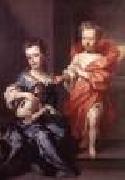 |
KNELLER, Sir Godfrey
|
|
German-born English Baroque Era Painter, 1646-1723
English painter and draughtsman of German birth. He was the leading portrait painter in England during the late 17th century and the early 18th, and, as such, the chief recorder of court society for almost 40 years. He popularized the kit-cat format for portraits and was also the founding governor in 1711 of the first proper academy of art in England. His older brother Johann [John] Zachary Kneller (b L?beck, 1642; d London, 1702), with whom he was close, was also a painter; his works include watercolour miniatures and still-lifes, |
|
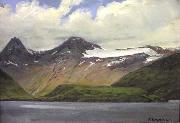 |
Knud Bergslien
|
|
(May 15, 1827 - November 27, 1908) was a Norwegian painter, art teacher and master artist. In his art, he frequently portrayed the lives of the Norwegian people, their history and heroes of the past. Bergslien is most associated with his historical paintings, especially Skiing Birchlegs Crossing the Mountain with the Royal Child.
Knud Larsen Bergslien was born in Voss, in Hordaland, Norway. His parents were Lars Bergeson Bergslien and Kirsten Knutsdotter Gjelle. Knud Bergslien was the brother of sculptor Brynjulf Bergslien and uncle of painter and sculptor Nils Bergslien. Monuments honoring the three famous Bergslien artists now exist in Bergslien park located in Voss, Hordaland |
|
|
|
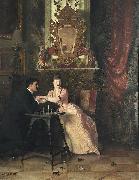 |
Knut Ekwall
|
|
was a Swedish painter, 3 April 1843 in Säby (Småland province), Sweden - 4 April 1912 in Säby.
Ekwall studied from 1860-1866 at the Academy of Arts in Stockholm, with emphasis on xylography (designing woodcut printing blocks) and drawing.
He became a pupil of the painter Ludwig Knaus in Berlin.
In 1870, Ekwall established himself as an artist in Munich in Germany and later worked in Leipzig.
His works during this period were primarily for magazine illustrations, and were reproduced as engravings.
He returned to Sweden and died there at the age of 69.
|
|
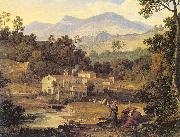 |
Koch, Joseph Anton
|
|
Austrian Painter, 1768-1839
Painter and writer. He was one of the most important landscape painters of the early 19th century. With his friend Johann Christian Reinhart he pioneered the 'heroic' landscape style by heightening the grandeur and structural clarity of classical Italianate landscapes in the tradition of Nicolas Poussin, Claude Lorrain and Gaspard Dughet. His work reflects a transitional period in European art. Largely under the influence of Asmus Carstens, Koch subscribed to many Neo-classical principles, but his work also has Romantic aspects. His interest in the natural sciences and Romantic philosophy betrayed an increasingly modern world-view, but he also embraced the medievalism of the Nazarenes. |
|
|

